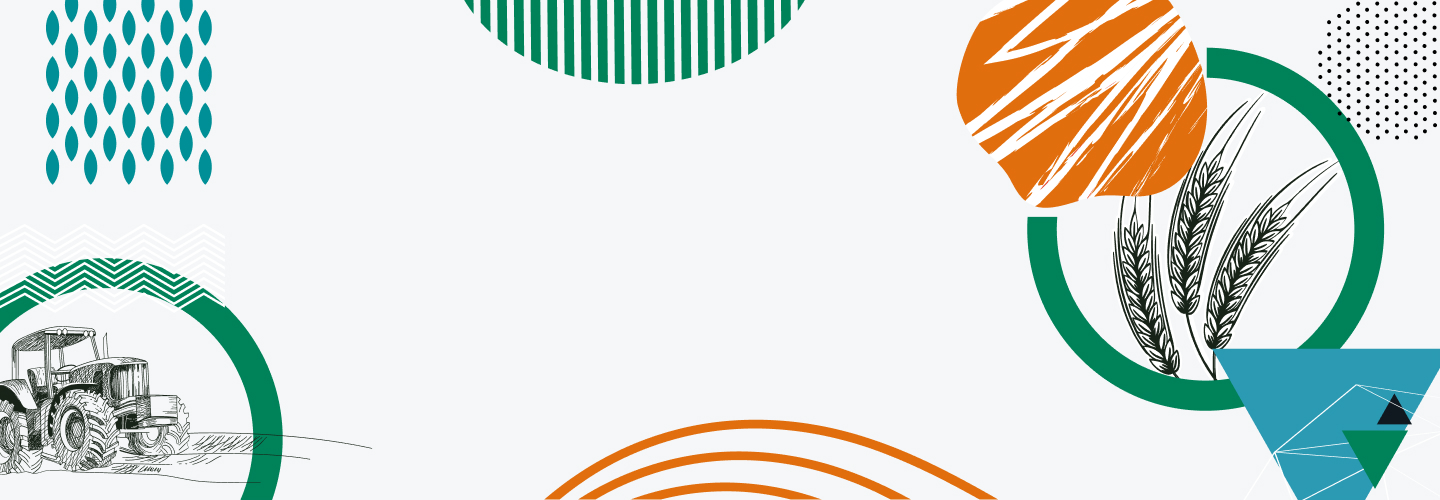
From searing temperatures to torrential rain, extreme weather events are becoming more commonplace due to the effects of climate change. Coupled with the Russia-Ukraine crisis — which continues to block grain exports despite talks of a “Black Sea Initiative” deal — these macro stresses are taking their toll on the global agricultural commodities market.
Agricultural supply is highly weather-dependent and the El Nino-Southern Oscillation (ENSO) cycle — a natural climate phenomenon involving changes in the water temperatures of the central and eastern tropical Pacific Ocean — has a strong bearing on world crop production. On top of this, extreme weather events and climate change are increasing the risks of crop failure.
World crop production is highly weather-dependent
The production of corn, wheat, soybeans and cotton depends heavily on the weather and production patterns year-over-year have fluctuated with adverse weather throughout the El Nino/La Nina cycle.
According to Paul Janish, Global Commodities Meteorologist at J.P. Morgan, July 2022 is shaping up to be the warmest on record for the Northern Hemisphere — intensifying concerns over spring crop yields and production potential. In the U.S., much of the Corn Belt experienced triple-digit temperatures in recent weeks, stressing crops in their key reproductive phase. Similarly, the U.K. is facing the prospect of a drought being declared in August, which could lead to widespread crop failure — especially if farmers are banned from irrigating their crops due to the water shortage.
In Germany, the water levels of the Rhine are running dangerously low as a result of a persistent heatwave, measuring just 71 centimeters at Kaub, the river’s bottleneck, in mid-July. As the Rhine is one of Europe’s most important shipping routes, this spells bad news for the transport of goods — including grain — and could further exacerbate supply-side risks.
We’re anticipating some deterioration in crop conditions, building of soil moisture deficiencies and pullback in the yield potential of key grain and oilseed crops — at a time when we have critically tight exportable supplies of agricultural products available to the world market.
Tracey Allen
Agricultural Commodities Strategist, J.P. Morgan
“Weather is a very material driver here and now,” said Tracey Allen, Agricultural Commodities Strategist at J.P. Morgan Research. “We’re anticipating some deterioration in crop conditions, building of soil moisture deficiencies and pullback in the yield potential of key grain and oilseed crops — at a time when we have critically tight exportable supplies of agricultural products available to the world market.”
Currently, J.P. Morgan Research projects the national U.S. corn yield will decline below trend, toward 175 bushels per acre, but this figure could decrease as a result of extreme weather risks. Similarly, trade sources suggest that European maize production potential may slip from 70 million tons to below 60 million tons, which would eliminate export prospects.
So what exactly does this mean for grain prices? For corn prices, which are currently hovering around $6 per bushel, J.P. Morgan Research forecasts suggest that there is a potential 20-30% upside on the basis of supply-side disappointments. “When we look at the extent to which prices have collapsed, we are now seeing new crop prices in 2023 track below the cost of production — for corn and for wheat. The market is really in need of a supply response,” said Allen.
Adverse weather often coincides with food price inflation
Food price inflation has typically been driven by supply-side shocks, often due to adverse weather. Between May 1990 and May 2022, ex-China agricultural inventories have often fallen as the Bloomberg Agriculture Index (BCOM AG) rose.
The FAO Food Price Index often tracks the ENSO cycle
The FAO Food Price Index, which is a measure of the monthly change in international prices of a basket of food commodities, has often tracked the ENSO cycle between June 1990 and June 2022.
Outside of agriculture, the impact of severe weather is felt across the commodities sector. For instance, in oil markets, hurricanes and storms can significantly disrupt crude production and refining activity. In recent months, extreme weather events such as Winter Storm Uri and Hurricane Ida caused oil production in the U.S. to plummet.
High oil prices in turn weigh on crop prices. Historically, episodes of food price inflation have often been coupled with elevated energy prices, as fertilizer, fuel and transportation costs are critical drivers of agricultural production margins — which in turn drive supply responses.
As the planet heats up, weather patterns will continue to change. This will undoubtedly influence the outlook for key agricultural commodities in the coming months.
Food prices and energy prices tend to rise at the same time
Between July 1989 and July 2022, the FAO Food Price Index and Brent crude oil prices rose at similar times, particularly around pivotal events such as the housing bubble collapse and the COVID-19 pandemic.
Related insights
-

Global Research
Global Research
Leveraging cutting-edge technology and innovative tools to bring clients industry-leading analysis and investment advice.
-

Global Research
Why are gasoline and food prices rising?
May 13, 2022
Gas prices at the pump have hit record highs for U.S. drivers and the cost of groceries is surging as inflationary pressures mount and the conflict in Ukraine persists. J.P. Morgan Research examines the outlook for consumer prices as the crisis in the region threatens commodity supplies.
-
Global Research
Feeding the world — The future of global food security
July 16, 2019
J.P. Morgan Research examines the factors affecting the value of the world’s most important crops and the future of global food security.
This communication is provided for information purposes only. Please read J.P. Morgan research reports related to its contents for more information, including important disclosures. JPMorgan Chase & Co. or its affiliates and/or subsidiaries (collectively, J.P. Morgan) normally make a market and trade as principal in securities, other financial products and other asset classes that may be discussed in this communication.
This communication has been prepared based upon information, including market prices, data and other information, from sources believed to be reliable, but J.P. Morgan does not warrant its completeness or accuracy except with respect to any disclosures relative to J.P. Morgan and/or its affiliates and an analyst's involvement with any company (or security, other financial product or other asset class) that may be the subject of this communication. Any opinions and estimates constitute our judgment as of the date of this material and are subject to change without notice. Past performance is not indicative of future results. This communication is not intended as an offer or solicitation for the purchase or sale of any financial instrument. J.P. Morgan Research does not provide individually tailored investment advice. Any opinions and recommendations herein do not take into account individual client circumstances, objectives, or needs and are not intended as recommendations of particular securities, financial instruments or strategies to particular clients. You must make your own independent decisions regarding any securities, financial instruments or strategies mentioned or related to the information herein. Periodic updates may be provided on companies, issuers or industries based on specific developments or announcements, market conditions or any other publicly available information. However, J.P. Morgan may be restricted from updating information contained in this communication for regulatory or other reasons. Clients should contact analysts and execute transactions through a J.P. Morgan subsidiary or affiliate in their home jurisdiction unless governing law permits otherwise.
This communication may not be redistributed or retransmitted, in whole or in part, or in any form or manner, without the express written consent of J.P. Morgan. Any unauthorized use or disclosure is prohibited. Receipt and review of this information constitutes your agreement not to redistribute or retransmit the contents and information contained in this communication without first obtaining express permission from an authorized officer of J.P. Morgan.